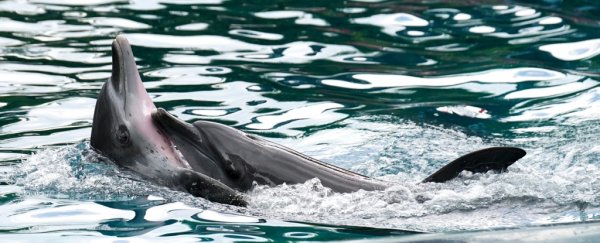It's probably no great surprise, but very little is known about exactly how sexual interactions take place between marine mammals and how genitalia has evolved to suit their needs.
So a team of researchers decided to figure it out using the preserved genitalia from dead ones.
External genitalia are weird. The male penis is one of the most morphologically diverse and rapidly evolving organs, and even between closely related species, they can vary wildly in size and shape.
Relatively little attention has been paid to female genitalia, in comparison. Because of this, it was previously thought that female genitalia evolved much more slowly - but recent research suggest that male and female genitalia can evolve together.
The best hypothesis we have for this rapid evolution is sexual selection, because the shape of the genitalia can determine how effectively the penis deposits sperm.
And a 2013 study on fruit flies found that coevolution occurs in structures in the male and female genitalia that come into contact with each other.
Led by researcher Dara Orbach of Dalhousie University in Canada, the team collected the genitalia of sexually mature male and female harbour porpoises, bottlenose dolphins, short-beaked common dolphins, and harbour seals that had died of natural causes, and selected the best male and female specimens from each species for further study.
 D. Orbach et al/Proceedings of the Royal Society B
D. Orbach et al/Proceedings of the Royal Society B
The penises, shown in the image above next to silicone endocasts of the vaginas, were pumped full of saline to make them erect.
Both sets of genitals were fixed in a formaldehyde solution so they would keep their shape, and the penises inserted into the vaginas and sewn into place.
Then the team used computed tomography to gauge how the penis fits inside the vagina, how deeply it penetrates, and which structures inside come into contact.
"While it may seem intuitive that the penis fits well into the vagina during copulation, the biomechanics and details of the anatomical fit can be quite complex and have seldom been explored," Orbach said in a statement earlier this year.
"Whales, dolphins and porpoises have unusual vaginal folds, spirals and recesses that the penis and sperm must navigate through to successfully fertilise the egg."
The team also used 3D modelling software to create 3D models of the genitalia constructed from photographs - up to 153 photos per specimen. These models were then used to figure out how the penises best fit inside the vaginas for fertilisation.
The result of all this mummified marine mammal hanky panky? Yeah. It's probably not just the male evolving.
"In the species examined, the genitalia of male and female marine mammals appear to have closely coevolved," the researchers wrote in the paper.
"The tip of the penis or shape of the terminal portion of the shaft and the lumen of the vagina strongly suggest morphological covariation. We suggest both congruent and antagonistic coevolution of male and female genitalia can occur among marine mammals."
This suggests that, by angling her body a certain way, the female can attempt to divert the sperm into one of the complicated recesses inside the structure of her vagina, and away from the egg, should she not wish to reproduce.
But the research has implications far beyond porpoises. The technique, the researchers suggest, can be used to study copulation between other animals.
Moreover, it can also help predict the best angle for fertilisation, helping determine when copulation is used for reproduction and when it might simply be something animals indulge in for fun, or social bonding.
The team's research can be found in the Proceedings of the Royal Society B.
